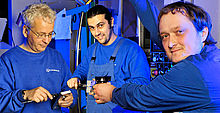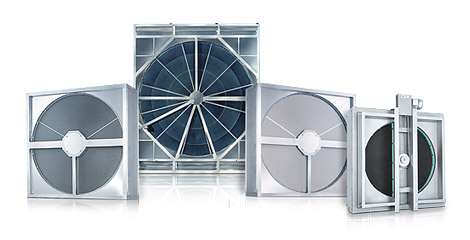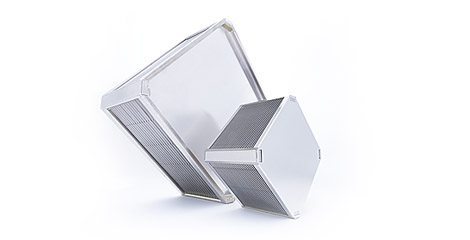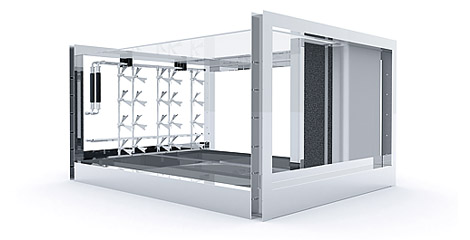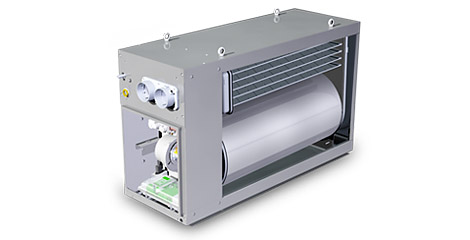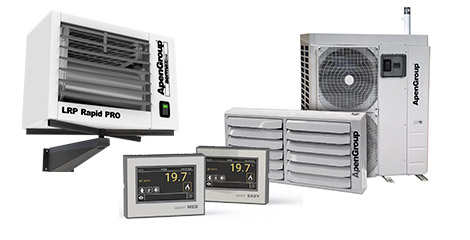The climate in a room is determined by both the air temperature and relative humidity. In summer the air entering from outside must usually be cooled. Using conventional air-conditioners, this process becomes expensive owing to the high energy required.
One alternative is DEC, which stands for ‘dessicative evaporative cooling’. This process drastically reduces the cost of room climate control and often allows air-conditioners to be dispensed with altogether.
In summer DEC enables low-energy dehumidification and air cooling; in winter, the built-in sorption rotor provides additional heat recovery together with humidity transfer.
DEC makes use of several physical PWTnomena, including cooling by evaporation (adiabatic cooling) and air drying by sorption. Air from outside is dried by the sorption rotor, then pre-cooled using a condensation rotor and finally brought to the desired room temperature and humidity via evaporative cooling.
DEC systems are well suited to buildings with large room volumes, such as auditoriums, offices and government offices, hotels and printing works.
Example of a DEC System

1–2 The sorption rotor extracts most of the moisture from the incoming air. Just as air is cooled when steam is introduced, the reverse occurs when it is dried - it becomes warmer as adsorption heat is released. The air leaves the rotor considerably warmer and with much lower relative humidity.
2–3 The air now passes into a rotary heat exchanger. Here the rotor cools the air using the stored coolness from the exhaust airstream.
3–4 The air is further cooled in the humidifier via evaporative humidification. The air entering the building is now at roughly 21°C with about 60% relative humidity and is thus within the ‘comfort zone’.
4–5 Inside the building the air becomes warmer and the humidity falls slightly.
5–6 Within the exhaust airstream the used air traverses another humidifier and is again significantly cooled by evaporative cooling. Now it is saturated with moisture.
6–7 The exhaust air is strongly heated in the rotary heat exchanger by the heat stored from the supply air; at the same time, the humidity level falls considerably.
7–8 The air is further heated by an external heat source (e.g. a solar thermal system, regeneration air heater or, in summer, unused district heating).
8–9 The high heat level binds the moisture into the air and the sorption rotor is regenerated by desorption.
Klingenburg supplies all relevant components for DEC systems. Talk to us. we will be pleased to help you design your individual DEC solution.




